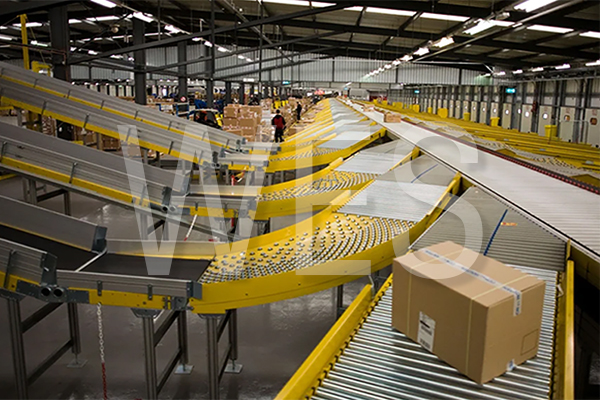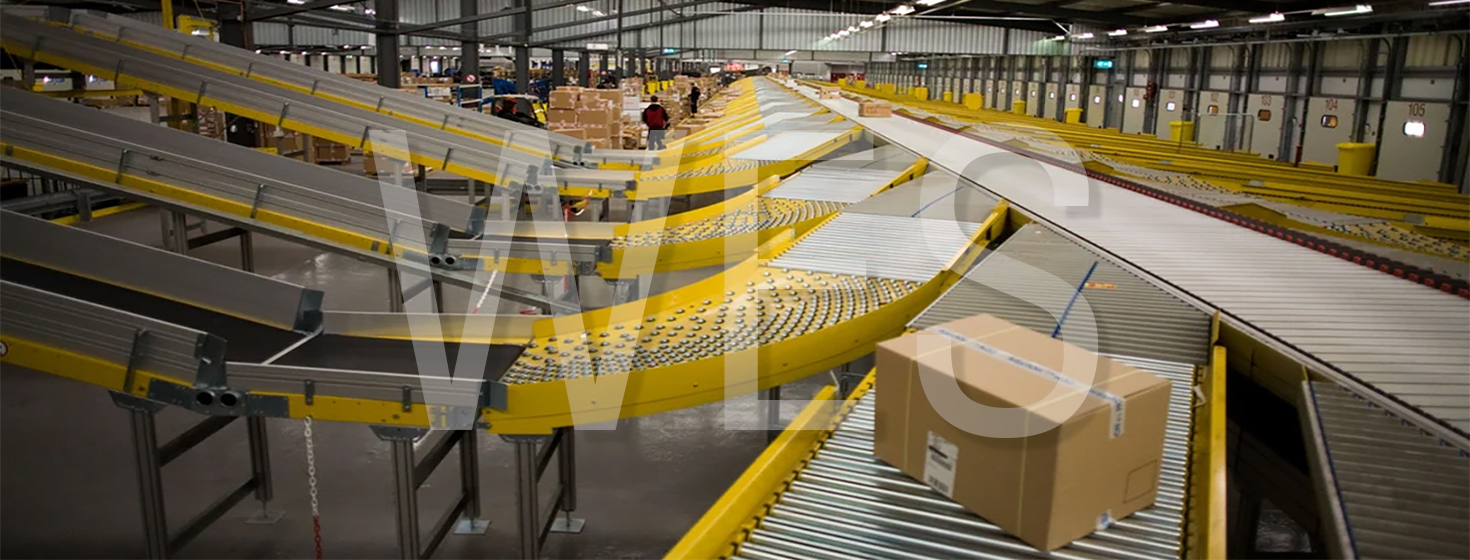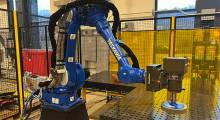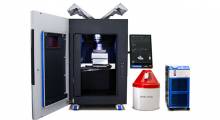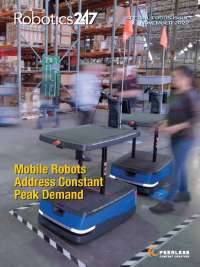Warehouse Execution Systems
Warehouse execution system software (WES) grew out of the need for automated distribution centers to throttle the release of order fulfillment through automation in a way that met customer delivery windows while keeping utilization high and steady.
The first WES suppliers got a foothold in Distribution Centers (DCs) that were installing high-end, fixed automation like sortation systems.
These operations needed a nimbler way of releasing work to the floor versus the “waves” of work that most warehouse management system solutions of the time batched together for processing.
Today, that core purpose for WES still remains, but the value proposition is expanding.
Instead of optimization of one major automation system in mind, it’s about optimizing flow across all assets and resources, including robots and processes that rely on manual labor.
WES sits between the warehouse control system (WCS) layer, the software that governs automated machinery like conveyors, sorters, or automated storage and retrieval systems (AS/RS), and warehouse management system (WMS) software that manages inventory, labor and warehouse fulfillment.
A key focus for WES has been to handle order release in a more dynamic or continuous fashion compared with static waves of work.
However, WES is not a one-trick pony for “waveless” order fulfillment with automation.
WES providers say the software orchestrates the overall flow of work across all resources and is increasingly employing artificial intelligence (AI) and machine learning.
WES vendors have come into the market from two basic directions, explains Dwight Klappich, supply chain research vice president and fellow with analyst firm Gartner.
The first WES vendors typically had a WCS background and added business logic to create WES functionality like dynamic order release. From the other direction, vendors WMS roots have moved into the WES arena by adding some means of automation visibility and updated order release functionality.
“Vendors come at WES from these different directions, so WES solutions tend to have different strengths, but, really, the key with a WES is how well it allocates and manages work for the warehouse environment considering multiple resources and constraints including labor, inventory, and the automation.”
For highly automated DCs, the need for a more sophisticated system that optimizes and prioritizes work is driven by the high velocity and volumes of order lines that e-commerce fulfillment operations must process each day, explains Klappich. “If all DCs were still just moving cases and pallets, we wouldn’t be talking about WES,” he says.
Optimizing Across Resources
WES should be able to optimize any resource found in a DC, agrees Scott Wahl, vice president of global software for Dematic. “The complexity of operations continues to increase as we add different automation subsystems, and, of course, there is also manual labor involved, so having software that can orchestrate and optimize material flow across the whole system is more important than ever,” Wahl says.
Dematic is a warehouse automation provider but acquired WES vendor Reddwerks in 2015. Earlier this year, Dematic acquired DAI, which offers WMS. Other vendors with roots in warehouse automation also are increasingly focused on software, including WES. As Wahl puts it, “customers are looking for a provider that can think holistically about the software ecosystem required across materials handling and the supply chain.”
Wahl says Cloud-based predictive analytics will become a more important facet of the WES market. Not only in predictions about machine downtime but also with predictive models about how to slot inventory or predictions around order completion times based on variables like order profiles and resources available within key zones of the material flow.
“We’ve always had good algorithms to optimize material flow,” Wahl says. “That is core to what we do. But going forward, WES will allow operations to be more real-time adaptive than was possible in the past.”
WES has its roots in using data science to “pull” work through a DC’s automation in a way that hits customer service levels while keeping efficiency high. That capability remains, says Wahl, it’s just that WES algorithms are now being applied to labor resources, robotics, and inventory positioning.
“We are applying lean principles, pull-based algorithms to all of the operations in a facility, whether it’s optimizing the flow of pickers, or it’s optimizing the way goods are slotted within a buffering system, like a multishuttle or an AS/RS,” says Wahl. “We are very much trying to apply the same kind of algorithms, which we call Distribution Science, to both manual and automated operations.”
An overlooked facet of WES for automated facilities is that not only does it provide for dynamic order release, it also keeps inventory levels balanced and optimized in real-time time, says Kevin Reader, director of marketing and business development for KNAPP, an automation vendor that offers WES.
In effect, he explains, WES logic considers multiple issues leveraging its knowledge of execution progress, including where to pick goods from, what areas need replenishment, and how the work will be sequenced to reach pack outstations in time for carrier pickups. “The opportunity is that when you have real-time, detailed knowledge of inventory management and mechanization, you enable smarter decisions,” says Reader.
Since many forms of automation like AS/RS have picking stations with labor, or manual replenishment processes, a key WES capability is to be able to allocate and tweak the labor needed to keep the automation running smoothly, says Nicholas Leonard, director of solutions architecture for Swisslog, an automation and WES provider.
“In our view, warehouse execution encompasses everything within the broader DC solution,” Leonard says. “It’s not just optimizing the machine handling. It’s business intelligence. It’s how to manage inventory. And, importantly, WES is the means of coordinating multiple zones, multiple technologies, and multiple different labor pools to create the overall warehouse flow.”
Bottleneck Busting
With the increasing use of autonomous mobile robots (AMRs), another focus for WES is the ability to synchronize multiple AMR solutions with each other and with other processes like conveyance. While AMR vendors have their own software to control their units, some DCs may use multiple AMR solutions, says Sean Elliott, chief technology officer for HighJump, whose “automation aware” WMS encompasses WES. HighJump is also part of Körber, which offers warehouse automation and logistics software solutions.
For instance, if a facility is doing AMR-assisted cluster picking in one zone and an AMR-based good-to-person workflow in another, with other fixed automation feeding into or out of those areas, WES keeps the overall flow balanced, says Elliott.
“The WES, or in our case, our automation-aware WMS, is what is sitting in the middle, with visibility into which technology is doing what, and how to apportion work so that different robotic zones, the traditional automation, and the humans in the DC are all working optimally together,” Elliot says.
Avoiding bottlenecks in busy DCs with both manual and robotic processes is another role WES will play, says Suzanne McGough, WES product manager at automation provider Honeywell Intelligrated.
“Our customers are looking at new avenues into advanced automation, which makes WES critical in utilizing those technologies, whether its robotics, other new systems and how to integrate new automation with what they already have,” says McGough.
Since WES is always cognizant of the progress of work in different zones, a key function is bottleneck avoidance, says McGough. In DCs with human pickers, AMRs, and some lift trucks traveling the floor, a WES also devises routes and tasks to avoid congestion. “With warehouse execution’s waveless mentality, it’s continuously releasing work to the different zones to avoid those bottlenecks and adapting to the way work is progressing throughout the day,” she says.
Many DCs make use of automation such as light-directed putwalls where workers process orders. WES can help avoid inefficiencies at putwalls by intelligently deciding which orders and items should be processed using a putwall, and which orders are best processed some other way, says Dan Gilmore, chief marketing officer with Softeon, which offers WMS/WES software. Generally, it’s best to avoid sending single line item orders through a putwall, as that creates an extra handling step versus a method like pick to cart.
“The software needs to be smart enough to identify which orders are best suited for processing through a putwall and release them in a way that will complete the maximum number of orders in the fewest number of picks.”
Podcast: Softeon's Dan Gilmore Discusses WMS and WES with Bob Tebilcock
In Gilmore’s view, WES is evolving in a way that makes it essential to concepts like the “smart” or “autonomous” warehouse, especially if the WES has WMS-level functions in areas like labor management and cartonization. “To get to the fully smart warehouse, you need WES and WMS working together,” says Gilmore.
Predictive and Automatic
To gain maximum benefit from WES, it’s best to let the software’s algorithms automatically make many decisions around balanced flow and order release, rather than kicking them up for review by managers.
Gilmore says one customer deploying Softeon’s WES initially wanted some decisions elevated to managers for review, but during implementation, the supervisors didn’t have enough time to do those reviews, so they let the WES make decisions autonomously. “It operated flawlessly, so they decided, ‘we’re not going to back to recommendation mode,’” says Gilmore.
While business intelligence features live under WES when it comes to rapid decisions around the release of work to the floor, or how to balance work across zones, it’s best to let WES logic make most decisions, says Gilmore. “The system understands all those factors and can just automatically release work in a way that hits the carrier cutoff times,” he adds. “And, by the way, it is learning over time through machine learning what the actual performance parameters are, and refining its decisions through that knowledge.”
Other vendors agree that WES can make a DC more self-adjusting. “The expectations from our customers, and the whole point with WES, is that decisions can be made automatically while informing operations managers of the state of order fulfillment process,” says McGough.
WES software does indeed make many decisions on the fly, but a need for business intelligence on factors like operational performance and asset health still exists, says Sean Brown, director of software and controls with Materials Handling Systems (MHS), a provider of warehouse automation solutions, including WES.
“I don’t think the principle fundamentals with WES have gone away, but what is being added to it is tying in more business intelligence,” says Brown.
“By visually demonstrating the trends that are happening, managers can utilize those insights to improve planning and have better information at their fingertips.”
The core of a good WES, explains Brown, has always been its ability to balance material flow and sequence work though different zones that have different processing rates so orders can be consolidated together at pack out and shipped on time.
This underlying capability can run automatically, he adds, but managers still want better dashboards and business intelligence for concerns including the throughput potential of a DC or multiple DCs and health of automation assets.
Brown also cautions against trying to force too much functionality into one “monolithic” WES, if a dashboard approach can tie in needed insights. “I do want one view of my world, but I don’t necessarily need every pillar that is part of that view being smooshed together,” he says.
Understanding the Building Blocks
What are common warehouse software capabilities that facilities must consider to meet business requirements?
The first step to breaking through the various labels is to look at what software in the warehouse actually does.
The chart below lists common warehouse software functions for equipment control, inventory management, and order fulfillment, along with the platform on which they typically reside. Please note, with such variability between systems
that go to market under the same label, the designations are an approximation.
Companies mentioned in this article (Quicklook):
Image courtesy of Materials Handling Systems
About the Author
Follow Robotics 24/7 on Linkedin
Article topics
Email Sign Up

